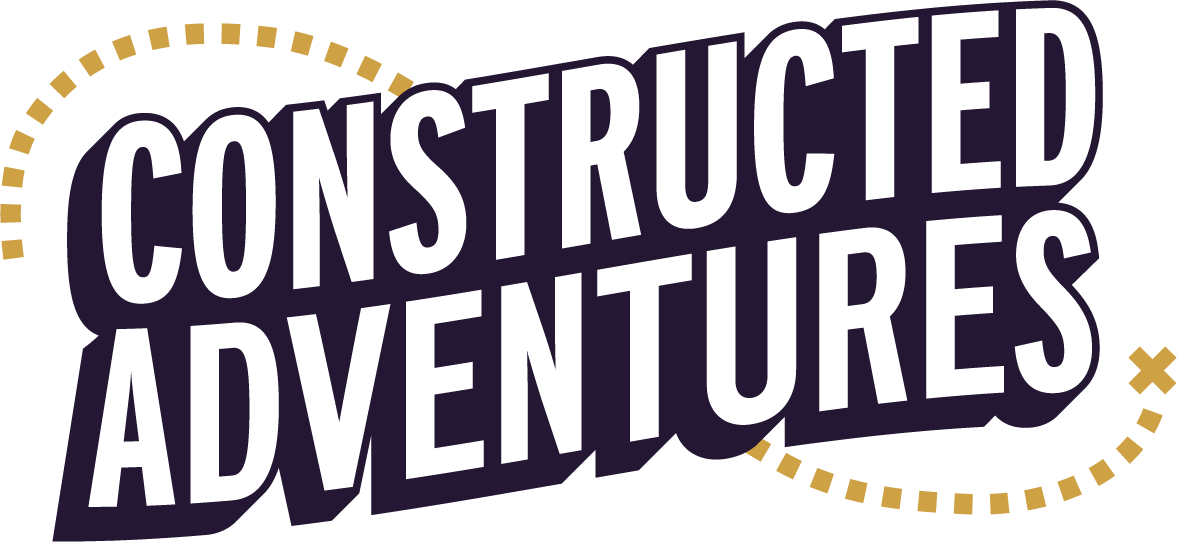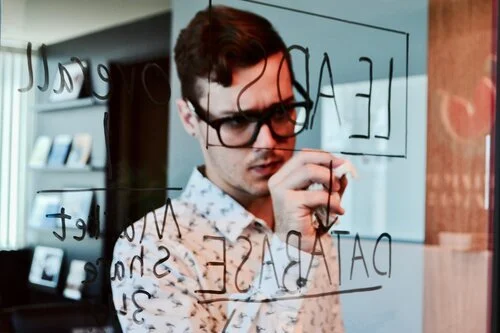How to Build a Puzzle for your Next Adventure
On the Constructed Adventures Discord channel, we're doing a fun exercise called "Puzzle Jam", where we are challenged to make a puzzle based on a surprise prompt. It's a great way to stretch your creativity and practice puzzle-making! It's also interesting to see how others approach making a puzzle differently. I've noticed a few people asking "how do you make a puzzle?" on the Subreddit, so I thought I would take you through my puzzle-making process, as I tackle the first Constructed Adventures Puzzle Jam! Let’s go make a puzzle!
My prompt for the Puzzle Jam was Poison Garden!
SO, HOW DO YOU MAKE A PUZZLE?
When making a puzzle, I usually go through these steps:
Brainstorming
Figuring out the Puzzle Parameters
Figuring out the Mechanics and Theme
Writing Flavor Text
Making a Rough Draft (trying it out!)
Writing Clues
Playtesting
1. BRAINSTORMING:
The first step we should take is to brainstorm. Normally, I will usually take 10-15 minutes to write down all of the ideas I have that relate to the theme. Why don’t you take a couple of minutes to write down what you think of when you see the theme, “Poison Gardens”? The goal is to get all of your ideas down on paper so that you can organize them. In this case, we can ask ourselves, “What could they possibly mean by Poison Gardens?” A garden filled with poisonous plants? A witch’s secret cupboard of poisonous herbs and spices for their potions? What could be considered poisonous? Oleander is a poisonous flower found in North America. We could also go the Little Mermaid route and make our player encounter a sea witch who keeps poisonous fish and sponges in her garden... This mental info dump could be anything from theme, to mechanics you would like to use, to any cool facts that you know about poison gardens- Did you know there is an actual poison garden that you can visit in the United Kingdom? You have to wear a special suit to make sure you don't accidentally die while visiting it!
You can go as crazy as you want, just make sure to get all of your ideas down on paper.
2. FIGURING OUT PUZZLE PARAMETERS:
Once we are done brainstorming, we need to figure out the parameters we want for this puzzle. What is the answer going to be? How difficult do we want the puzzle to be? Is it going to be a physical puzzle (these are solved by physical manipulation) or a pencil puzzle (these are figured out by doing the work on a piece of paper, i.e. word searches, crosswords, ciphers, and so on). In a treasure/scavenger hunt, the answer will most likely be the location of the next clue, but since we’re making a standalone puzzle, the answer could be whatever we want! Since we’re just learning how to make puzzles, let’s make it simple. Also, since it’s for an online community, it’s most likely going to be a pen and paper puzzle, so let’s focus on those kinds.
3. FIGURING OUT MECHANICS AND THEME:
Now that we know the parameters of the puzzle we’re going to make, the next step is figuring out the mechanics. Mechanics refer to the specific type or element of the puzzle. Like a word search puzzle has a different mechanic from a cipher puzzle (there is a big difference between looking for words to cross off and decoding a message to discover a word). Mechanics are the bones of your puzzle; it’s how the puzzle relays information, and how players will go about solving the puzzle. This is a good time to research all of the different kinds of puzzles and choose which one we’re going to use. Here’s a good site that lists 11 types of common escape room puzzles (there’s a lot of crossover between treasure/scavenger hunts and escape rooms). We know we’re going to make a pencil puzzle, and we want to make a puzzle that is easier to solve… So how about we use a puzzle that is universally recognizable? For this example, we will use a crossword puzzle where the intersecting letters, when strung together, will spell out the answer! This works well because everyone is familiar with crosswords. They will be able to solve the first part no problem. Looking at our brainstorming notes, I think the answer should be OLEANDER. You will only need 8 letter intersections, so you won’t need to make the crossword too big either, which is good! If a puzzle seems too daunting at the beginning, the player will feel discouraged before they even start, and we want them to have fun solving the puzzle! We also need to think about a theme. Theme is a particular setting for the puzzle. To figure this out, we look at our prompt. Poison Garden implies things that are deadly, so how about we make a crossword about things that are deadly, and have the solution be a deadly flower that will fulfill the Poison Gardens Prompt (OLEANDER).
4. WRITING FLAVOR TEXT:
We’ve got the makings of a great puzzle so far! Now it’s time to write. Flavor Text is when the puzzle creator gives the players a setting for their puzzle, and it is a great way to bring in the theme. Not all puzzles need to have flavor text. You can make a great puzzle without it, but part of the fun of solving a puzzle is immersing yourself into its world. For this puzzle, we’re going to write some flavor text. Keeping the poison garden theme in mind, let’s make the player someone who has unwittingly stumbled across a poison garden and they are trying to find a way out!
How about we give the player the following scene:
”You stumble into a garden, and are surrounded by beautiful flowers that you desperately want to pick and take home. But upon reading their signs, you realize that these blooms are as deadly as they are dazzling. Keeping care to not touch the alluring flora, you wander the winding garden paths until you come across a wrought iron gate with a plaque.”
***Note from the Architect: It’s REALLY important to make sure you don’t accidentally add red herrings into your flavor text.
5. TRYING IT OUT:
We know what puzzle we want to make. We know what the goal of the puzzle is. We know what the setting is. Now it’s time to make a rough draft! First, we’ll make a crossword puzzle that will use the letters in the intersections to spell out OLEANDER. So that means we need to find a word associated with the notion of “deadly” that has an O in it. Let’s use POISON; it’s universally known to be deadly, and should be easy for others to figure out.
Now we need a word that has an O and L in it, but not next to each other. I think the world OCCULT will go nicely here. It has enough separation between the two important letters and still fits the theme. We will continue on like this until we’ve filled in the whole crossword puzzle. And look! It works! Now we just need to write the crossword clues (leading the player to the answers) and we’re done!
6. WRITING CLUES:
We have a puzzle, and we have an answer, but the answer has no meaning! So, we have to give it meaning by writing clues for the player to know how to solve the puzzle and what to look for. When integrating key words and clues into the flavor text to lead the player to solving the puzzle, this is called Signposting. Let’s see how we can signpost this puzzle. The puzzle will be on the plaque that the player finds, and I think having a rhyming clue to signpost will fit the feel of the narrative that we’ve started. Let’s try this:
Written upon the plaque, you see an empty crossword puzzle, and the following message:
“Deadly as this garden may be, there is a chance to set you free. Speak the name of the deadliest flower, but know this, you have one hour. Solve this puzzle of death and wrath, and be aware of the intersecting paths."
This is a decent clue because we are giving the player a lot of information in a few sentences. We are telling them what they need to do (Speak the name of the deadliest flower), we tell them they have a time limit (they have one hour, though it shouldn’t take nearly that long), we tell them they need to solve the crossword to get their answer (Solve this puzzle of death and wrath) and we tell them how to find the final answer (Be aware of the intersecting paths).
7. PLAYTESTING:
It’s time to put everything together, make it look pretty, and do the hardest part of puzzle-making; playtesting. Playtesting is where you have someone other than yourself try the puzzle to see if it works and makes sense. At this point, you know your puzzle inside out and backwards. You’ve tested it yourself to make sure it works, and you are happy with it. Now it’s time to have someone else look at it (preferably 2-3 people). They will definitely find what’s wrong with your puzzle, even if you think there’s nothing wrong with it. It’s very common for our brains to skip over small mistakes that we’ve made, but those mistakes could make or break your puzzle; you need to be able to have other people look at it so you can fix those mistakes. I’m not going to lie, it kind of stinks when the puzzle you know is perfect turns out to be unsolvable, but this process is critical because it will make your puzzle even better in the long run. A solvable puzzle that isn’t “perfect” is way better than a “perfect” puzzle that isn’t solvable. Once you’ve fixed the mistakes that your playtesters pointed out, and they can solve your puzzle with no problems, be sure to give it someone new. If they can solve it with little to no problem, then your puzzle is ready to present.
Congratulations! We’ve finished the puzzle!
We have the flavor text on the top, the puzzle is on the plaque, and the clues for solving the puzzle are on the bottom. I also added the lines at the bottom of the plaque to let the player know that they are looking for an 8-letter word. When making a puzzle, it’s always a good idea to give the player a place to input their answer.
I hope that you’ve learned the process of making a puzzle for your next Adventure! There are so many possibilities when it comes to puzzle-making, the only limit is your imagination. We’d love to see what puzzles you come up with in the Constructed Adventures subreddit and Instagram account! Also, if you need help with your puzzles, need someone to playtest them for you, or just wanna chat, you can drop in on the Constructed Adventures Discord channel too! You can join the next Puzzle Jam and practice your own puzzle-making!
Until next time,








